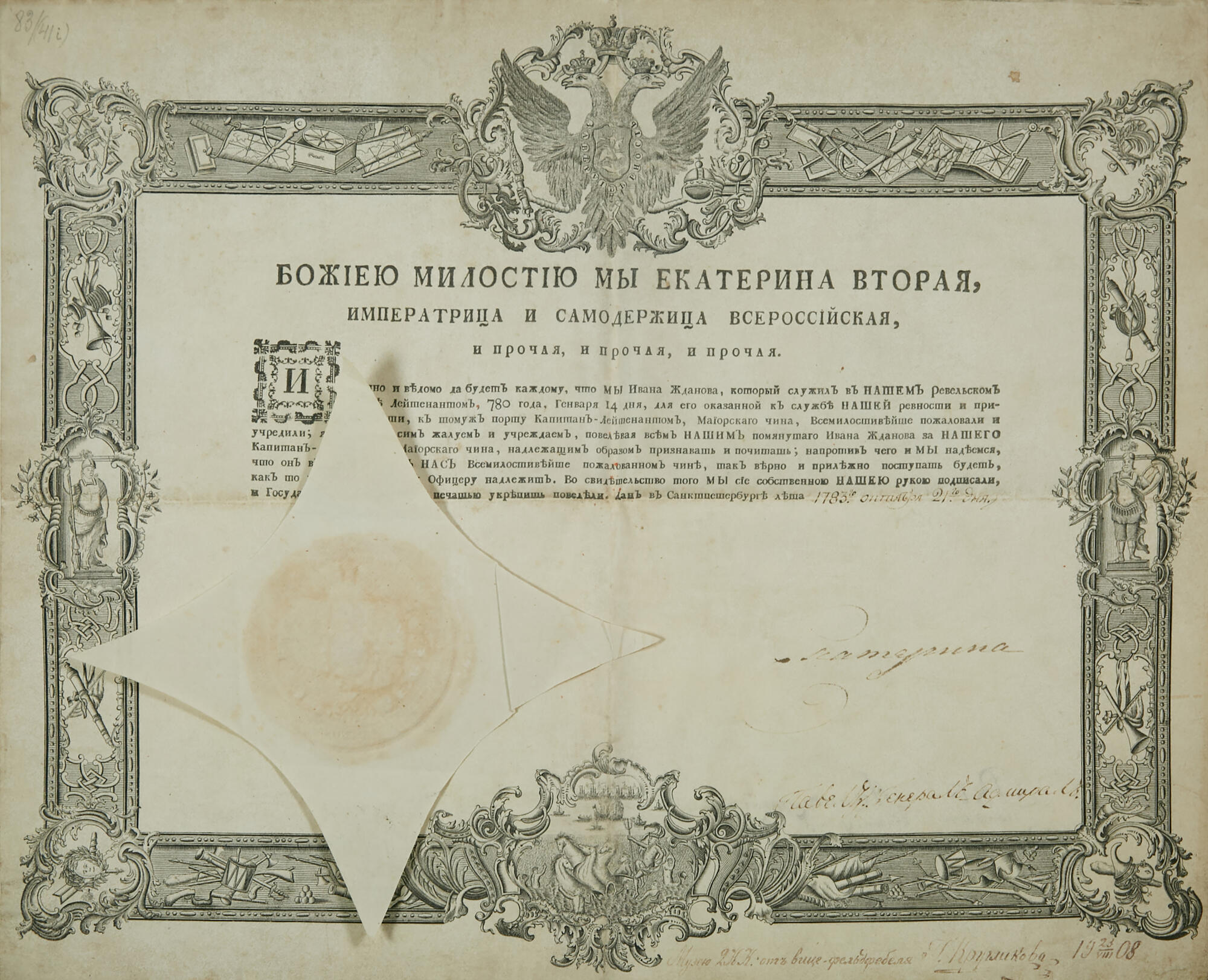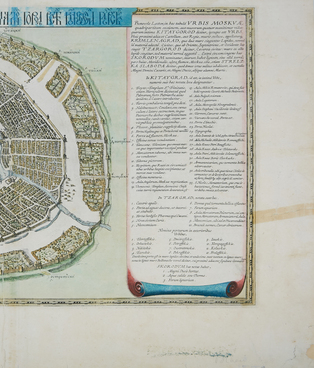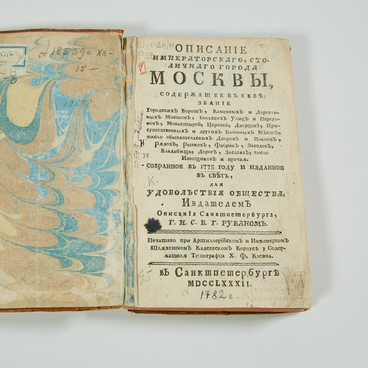The Museum of Moscow displays a patent for the rank of lieutenant commander presented to Lieutenant Ivan Zhdanov. This is a standard patent sheet of the Catherine II era for awarding naval ranks.
Such sheets were decorated with a double-headed eagle at the top and naval paraphernalia at the bottom. The main text with information about the awardee and their merits was printed in black ink on a sheet of parchment. At the top, the shortened title of empress Catherine II was given in different fonts. Below it is the main text, in which the first letter from the word “known” and the words “We”, “Our”, “Us” are printed in bold. The date of the patent’s issue was written down by hand in walnut ink. The document is certified by the admiral general Pavel Petrovich, the heir to the throne, sealed with the state seal. The seal has an embossed sticker in the shape of a four-pointed star. At the bottom is a small inscription made with walnut ink: “To the Museum 2KK from the vice-sergeant G. Kruglikov, 23.08.1908”.
Such patents were given a unique number and registered in the Admiralty. On the back of this document, in the lower left corner is a text written in walnut ink “Recorded in the book of the Admiralty under No. 1177”. On the right: “No. 836, Sealed in the Board of Foreign Affairs.” There is a slot for attaching the seal.
A patent established the class status of the recipient and gave them the right to certain benefits and advantages. In 1722, Peter the Great put into effect the “Table of All Ranks in the Military, Government and Court…”, thereby confirming his exclusive right to royal benefaction. The Table of Ranks recorded a clear organizational structure of the government service, ensuring its subordination to the supreme power. The list of established ranks was separated by service types and ranks, each service type was divided into 14 ranks or classes. The award of various honorary titles and orders was associated with the system of ranks. The connection was mutual: the title was given only to holders of ranks of certain classes and state awards; at the same time, obtaining the title usually accelerated promotion through the ranks. The patent for the rank (award of rank) guaranteed the receipt of honorary titles and confirmed the right to award Russian military and civilian orders.


